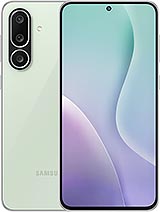Samsung Galaxy S8+ Exynos 8895 vs Snapdragon 835 benchmark comparison

In case you've somehow missed it we'll reiterate that the Galaxy S8 and S8+ have two distinct versions - one powered by the company’s own Exynos 8895 chipset and another one equipped with a Snapdragon 835.

Samsung has repeatedly reassured us that the two are perfectly on par when it comes to performance. Yet we know better than taking such statements for granted and had to check for ourselves.
The Qualcomm Snapdragon chipset has its eight custom Kryo 280 cores in two clusters, working at 2.35 and 1.9 GHz, respectively. Samsung's solution, on the other hand, employs four redesigned M1 "Mongoose" V2 custom cores, clocked at 2.3 GHz and a less power-intensive cluster of four Cortex-A53 units, running at 1.7 GHz. There are some differences in the graphics department as well: an Adreno 540 on the Snapdragon 835 and a Mali-G71 MP20 on the Exynos 8895.
And now that we finally managed to test a US unit and diving right into the numbers, we kick off by saying both chips perform almost identically in the CPU department.
GeekBench favored the Exynos 8895, although performance deltas are small. Then again, the older GeekBench 3 gave an edge to the 2.35 GHz Kryo 280 core in the Snapdragon over a 2nd-gen Mongoose 2.3 GHz one in single-threaded loads. This could partially be attributed to the higher clock speed, but we believe newer and updated test scenarios and procedures are at play more than anything else here. It's only natural, as both hardware and software improves, you can't expect to continue grading performance with the exact same workloads and tests.
GeekBench 3 (multi-core)
Higher is better
-
Samsung Galaxy S8+
7375 -
Huawei Mate 9
7290 -
Samsung Galaxy S8+ (SD 835)
7202 -
Samsung Galaxy S7 edge (E8890)
6600 -
Apple iPhone 7 Plus
6123 -
OnePlus 3T
5956 -
Samsung Galaxy S7 edge (S820)
5420 -
Sony Xperia XZs
5044 -
Google Pixel XL
4265
GeekBench 3 (single-core)
Higher is better
-
Apple iPhone 7 Plus
3526 -
OnePlus 3T
2560 -
Samsung Galaxy S7 edge (S820)
2345 -
Huawei Mate 9
2173 -
Samsung Galaxy S8+ (SD 835)
2161 -
Samsung Galaxy S7 edge (E8890)
2151 -
Samsung Galaxy S8+
2072 -
Sony Xperia XZs
1972 -
Google Pixel XL
1960
GeekBench 4 (multi-core)
Higher is better
-
Samsung Galaxy S8+
6338 -
Huawei Mate 9
6112 -
Samsung Galaxy S8+ (SD 835)
6106 -
Apple iPhone 7 Plus
5664 -
Samsung Galaxy S7 edge (E8890)
5583 -
OnePlus 3T
4364 -
HTC U Ultra
4201 -
Google Pixel XL
4152 -
Samsung Galaxy S7 edge (S820)
4128 -
Sony Xperia XZs
3979 -
LG G6 (US)
3648
GeekBench 4 (single-core)
Higher is better
-
Apple iPhone 7 Plus
3473 -
Samsung Galaxy S8+
1938 -
Samsung Galaxy S8+ (SD 835)
1915 -
Huawei Mate 9
1898 -
OnePlus 3T
1890 -
Samsung Galaxy S7 edge (E8890)
1860 -
LG G6 (US)
1792 -
Sony Xperia XZs
1724 -
Samsung Galaxy S7 edge (S820)
1696 -
HTC U Ultra
1647 -
Google Pixel XL
1507
The same logic can be applied to AnTuTu. AnTuTu 5 gave the Snapdragon 835 a very slight edge, while AnTuTu 6 sees the Exynos on top.
AnTuTu 5
Higher is better
-
Samsung Galaxy S8+ (SD 835)
81688 -
Samsung Galaxy S8+
80923 -
Huawei Mate 9
79963 -
OnePlus 3T
78135 -
Samsung Galaxy S7 edge (S820)
75934
AnTuTu 6
Higher is better
-
Samsung Galaxy S8+
174070 -
Apple iPhone 7 Plus
173110 -
Samsung Galaxy S8+ (SD 835)
168133 -
OnePlus 3T
165097 -
LG G6 (US)
141895 -
Google Pixel XL
141186 -
HTC U Ultra
139750 -
Sony Xperia XZs
133574 -
Samsung Galaxy S7 edge (S820)
132849 -
Samsung Galaxy S7 edge (E8890)
129229 -
Huawei Mate 9
122826
Overall, we are willing to agree with Samsung that CPUs are perfectly on par between the chipsets, yet, the graphics units tend to have a wider difference between them. The Mali-G71 GPU, inside the Exynos 8895 consistently manages to output a few more frames than the Adreno 540 in the Snapdragon.
GFX 3.1 Manhattan (1080p offscreen)
Higher is better
-
Samsung Galaxy S8+
42 -
Samsung Galaxy S8+ (SD 835)
39 -
Apple iPhone 7 Plus
39 -
OnePlus 3T
33 -
Samsung Galaxy S7 edge (S820)
32 -
Sony Xperia XZs
32 -
Google Pixel XL
32 -
Samsung Galaxy S7 edge (E8890)
29 -
HTC U Ultra
27 -
LG G6 (US)
25 -
Huawei Mate 9
22
GFX 3.1 Manhattan (onscreen)
Higher is better
-
Apple iPhone 7 Plus
42 -
Sony Xperia XZs
34 -
OnePlus 3T
33 -
Samsung Galaxy S8+
23 -
Huawei Mate 9
23 -
Samsung Galaxy S8+ (SD 835)
18 -
Google Pixel XL
17 -
Samsung Galaxy S7 edge (S820)
16 -
Samsung Galaxy S7 edge (E8890)
15 -
HTC U Ultra
13 -
LG G6 (US)
11
GFX 3.1 Car scene (offscreen)
Higher is better
-
Samsung Galaxy S8+
25 -
Samsung Galaxy S8+ (SD 835)
23 -
Sony Xperia XZs
20 -
OnePlus 3T
20 -
Google Pixel XL
19 -
Samsung Galaxy S7 edge (S820)
18 -
HTC U Ultra
18 -
Samsung Galaxy S7 edge (E8890)
15 -
LG G6 (US)
15 -
Huawei Mate 9
13
GFX 3.1 Car scene (onscreen)
Higher is better
-
Sony Xperia XZs
21 -
OnePlus 3T
20 -
Huawei Mate 9
14 -
Samsung Galaxy S8+
13 -
Samsung Galaxy S8+ (SD 835)
12 -
Google Pixel XL
11 -
Samsung Galaxy S7 edge (S820)
10 -
HTC U Ultra
10 -
LG G6 (US)
8.1 -
Samsung Galaxy S7 edge (E8890)
7.8
Still, in the real world usage, gaming is a smooth experience on both the international and US versions of the handsets. If ultimate frame rates are what you are after, you can choose to lower a games resolution though Samsung's Game Launcher or not force full-screen stretching on older titles. But, during our time with the S8 and S8+, we never really felt the need for any such adjustment. Even demanding titles adapt themselves seamlessly and play great on the devices.
Basemark X
Higher is better
-
Samsung Galaxy S8+
43862 -
OnePlus 3T
36958 -
Huawei Mate 9
36519 -
HTC U Ultra
35875 -
Samsung Galaxy S8+ (SD 835)
34951 -
Sony Xperia XZs
33815 -
Samsung Galaxy S7 edge (S820)
32160 -
LG G6 (US)
32041 -
Google Pixel XL
30861 -
Samsung Galaxy S7 edge (E8890)
28480
Basemark ES 3.1 / Metal
Higher is better
-
Apple iPhone 7 Plus
1517 -
Samsung Galaxy S8+
1111 -
Samsung Galaxy S8+ (SD 835)
817 -
Huawei Mate 9
794 -
Samsung Galaxy S7 edge (E8890)
733 -
LG G6 (US)
647 -
OnePlus 3T
641 -
Google Pixel XL
626 -
Samsung Galaxy S7 edge (S820)
624 -
Sony Xperia XZs
623 -
HTC U Ultra
582
Related
Reader comments
- AnonD-688557
- 31 Jul 2017
- 0a{
In the article it says that you are using both S8 . But in your picture ,. It looks like you have one S8 and one S8+
- Anonymous
- 27 Jul 2017
- PEq
best s8+
- Hint
- 08 Jun 2017
- kgS
I ordered an unlocked version from a very popular website for electronics, cameras, etc ... I could not register it with Samsung and called Samsung for help, they told me I got an international version of the S8 and could not register it in the ...








 Motorola
Motorola Samsung
Samsung OnePlus
OnePlus Honor
Honor Samsung
Samsung


